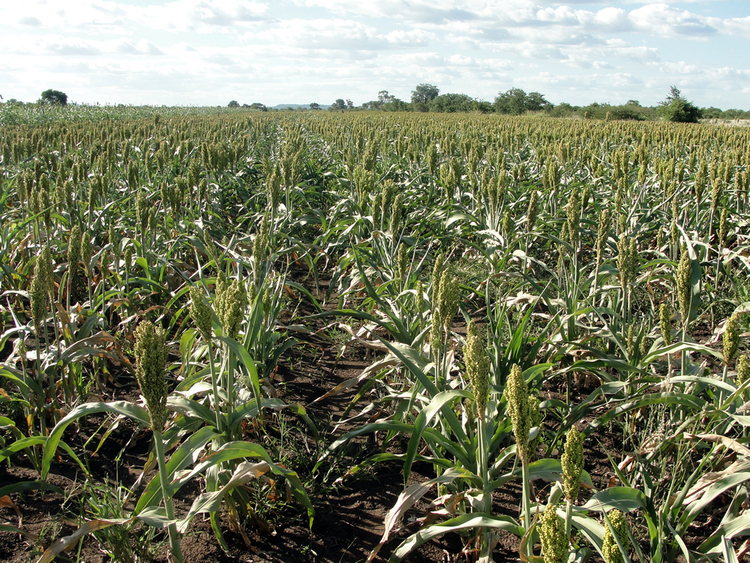
The Sunday Mail

Business Reporter
THE Agricultural and Rural Development Authority (Arda) is still planting crops at its estates around the country as it targets to put more than 100 000 hectares under grain in the current El Niño-delayed cropping season.
The parastatal’s chairperson, Mr Ivan Craig, said the targeted hectarage for the 2023/4 cropping season is 20 percent lower than the area covered in the previous season.
“Planting is ongoing and our target is 100 000ha of maize and 20 000ha of sorghum … we are trying by all means to make sure that we plant as much as possible,” said Mr Craig. “Compared to the previous summer cropping season, the hectarage targeted for planting is slightly less because of the evidence of El Niño . . . not everybody went on full throttle to plant, so you find that we are lower by about 20 percent; that is land expected to be put under a crop.”
Arda owns 21 estates across the country with about 98 000ha of arable land, of which 19 000ha have irrigable capacity. Before the advent of the Second Republic in 2017, most estates were idle and underutilised due to years of neglect and lack of investment. “This project we are not doing single-handedly; we are working hand-in-hand with Agritex technocrats … and we are also working hand-in-hand with AFC (Agricultural Finance Corporation) in funding the inputs,” he said.
“This is a joint venture programme and you find that we are looking at all the irrigation schemes and individual farmers who are actually contracted by Arda to have an outgrower programme.
“At the moment, we don’t have the planted hectarage because the farms are inaccessible due to the rains, so if I give you a figure I will be lying.”
The authority has since embarked on joint venture farming programmes with individual farmers and corporates to ensure national food, feed, fibre, biofuels and seed security.
Some of the estates under partnership include Balu, Jotsholo, Fair Acres, Middle Sabi, Mkwasine, Chisumbanje, Antelope, Ngwezi and Mushumbi Pools.
One of the noticeable effects of El Niño, Mr Craig added, was the delayed start to the season.
“If you look at El Niño, already it’s easy to assess because you compare the other season’s crop and the current season’s crop, you find that in other seasons our maize should be at waist height and some having started tussling … yesterday (Thursday) I was in Mutoko and the crop is just coming out and some of it is on knee height, which means the negative effect of El Niño was the late start of the season,” he said.
“This is a very negative impact to agriculture just because you find in high-altitude areas temperatures have already started dropping and yet the crop is still young.
“So, technically, the yield at the end of the day is going to be affected …”
But, despite the odds, Government is determined to make the most out of the current cropping season.
In its latest weekly report, the Ministry of Lands, Agriculture, Fisheries, Water and Rural Development indicated that a total of 2,5 million hectares had been planted countrywide against a target of 3,1 million ha.
Under the climate-proofed Pfumvudza/Intwasa programme, 11,5 million plots had been planted, up from 5,5 million last year.
“A great milestone indeed towards food security. The Government continues to support farmers in order for them to meet targets. Three plots per household are encouraged,” said the report.
Farmers have also been encouraged to focus on boosting yields through good agronomic practices, which include exercising maximum weed control, practicing split fertiliser application and watching out for the fall armyworm, among other pests.
The Government expects agriculture to grow to a US$13,75 billion industry by 2025 after surpassing the initial target of US$8,2 billion in 2021 well ahead of time.
The growth was driven by the successful implementation of the Agriculture Recovery and Growth Plan that was launched in 2020 to promote food security, import substitution, diversified exports and value addition, among others.
Last year, the sector was estimated to have grown by 9,7 percent.
Ends






